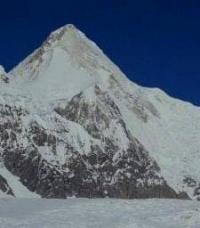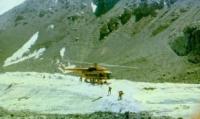Вы здесь
Sights Peak Khan-Tengri.


Travel advisory in Kyrgyzstan.
“Faeries, come take me out of this dull world,
For I would ride with you upon the wind,
Run on the top of the dishevelled tide,
And dance upon the mountains like a flame”
William Butler Yeats. «The Land of Heart's Desire».
Package tourists of Kyrgyzstan.
Those mountaineers who seek the horary title of “Snow Leopard” have to climb all of the peaks over 7000 meters in Central Asia. There used to be four such peaks, but now there is fifth as Khan Tengri has been added to the list following a recent survey when it was discovered that, rather than the mere 6995m that was previously thought, the summit in fact stretches to a height of 7010m above sea level.
This newly acquired status as a seven thousand meter peak is not, however, universally acknowledged, and some mountaineers treat the claim with a little scepticism. The error may have been made by a Russian topographical expedition in 1912, which produced many maps of the region or the first, unsuccessful, attempt to climb the mountain in 1929.
The height of the mountain is not just the mystery surrounding the mountain whose name is variously translated as “Prince of Spirits” or “Ruler of the Sky”. It is a mountain clouded in mystery, just as, in reality, the summit is often obscured by clouds.
The mountain sits astride the Kyrgyz Kazakh border, and near to the Chinese border. There are many reports which suggest that it marks the junction of the three borders, but this is not strictly true, the three borders meet some 7 km to the west at the 6637m East Shateor peak.
In the past, there has been some confusion between Khan Tengri and Peak Pobeda – Semyenov, “Tienshansky”, mistakenly identified the latter as Khan Tengri when he first reached the region in 1857. It was mentioned in accounts dating back to 1200 and explorers searched for an approach to the foot of the mountain.
Semyenov confused the peak and its neighbour, Peak Pobeda. It was the German Gottfried Merzbacher who was the first saw the entire peak having found a path along the Enilchek glacier. Merzbacher realized that any attempt on the peak would require a large and well organized expedition, (and in 1931, another member of the expedition wrote that the probability of ascending the mountain was “no more than 5%.”).
Although universally known as Khan Tengri, the local name for the mountain is Kan Tau (“Blood Mountain”), perhaps because of the burning red colour it adopts at sunset, or perhaps because of the numbers of climbers that have died in attempting to climb the peak.
Unfortunately, every climbing season seems to bring a crop of fatalities. Despite the number of casualties experienced over the years – many mountaineers still seek to make the ascent. The first confirmed successful ascent was made in 1931, by a Ukrainian team, following what was to become “the classical route”- it was another 33 years before a different route was opened but there are now nine recognized routes to the summit and a range of facilities in place for logistical support, such as a number of camps at the foot of the mountain.
The next ascent was in 1936. This was followed by one more, led by Ambulakov, who had been the first person to climb Peak Communism in the Pamirs. At first, luck seemed to be with them, because the group of five climbers managed to reach the peak ahead their planned schedule … but on their descent they experienced difficulties and one climber died from frostbite, whilst two others suffered serious difficulties.
It was eighteen years before another successful attempt to climb this unforgiving peak was completed. Buried on the peak is a capsule containing a message from previous climbers who have ascended the mountain.
Each new arrival at the summit digs up the capsule and adds a message in pencil, (it is impossible to write in ink) with his name, and the date of the ascent, and then buries it again. In a sensitive border zone, special permits are required. In the Soviet period, even local mountaineers needed special permissions and foreigners were totally prohibited access until 1989.
The mountain makes for spectacular photos with its pyramid peak – and there are photos which appear to show a face in the snow on the mountain sides – The spirit of the mountain? At the foot of the mountain lies the Enilchek Glacier and the mysterious Merzbacher lakes which appear each year in summer only to drain away in August when the ice bank breaks.
Authority:
Abdurashid. “Discovery Travel” Magazine. www.centralasia.travel
Photos by
Alexander Petrov, Vladimir Serbenko.







